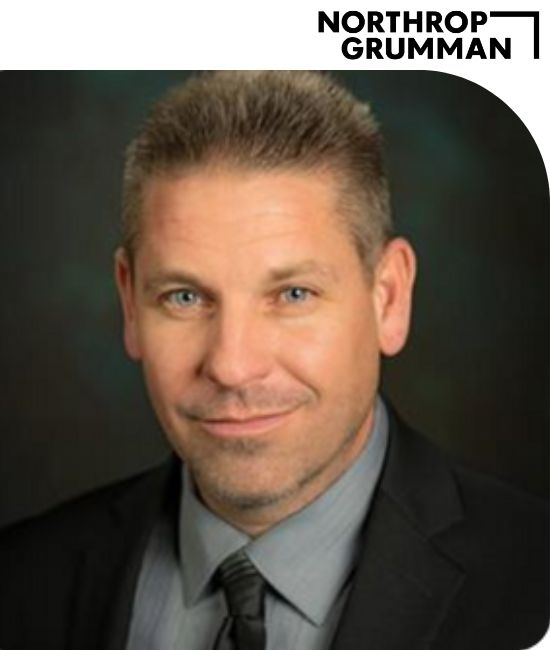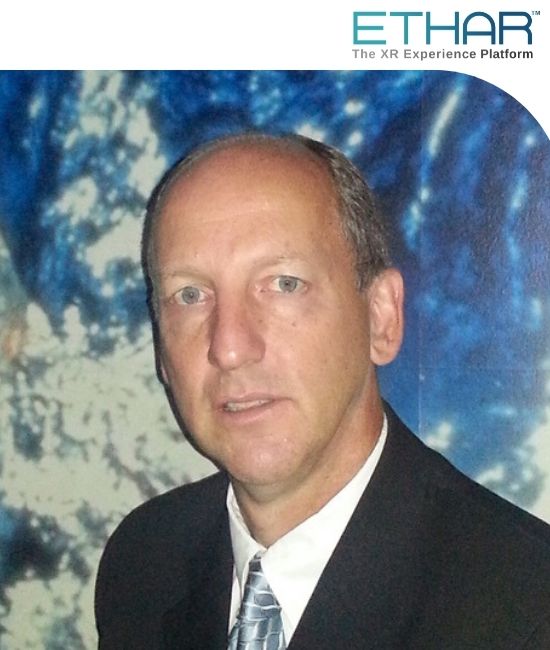11:50 AM - 12:45 PM
Description
If you are tasked with implementing AR and VR in your company then this session is for you. It can be difficult to separate the hype from reality when it comes to implementing emerging technologies. Everything works great in a pre-recorded demonstration online and it might even perform well in a training center or conference room. But we live in the trenches and it’s a different environment there. In this session we will hear from real industry experts that have forged the path by putting technology in the hands, and on the heads of factory workers, warehouse employees, engineers and technicians on the front lines. During our discussion we will discuss:
The toughest lessons we’ve had to learn in implementing XR
Where have we found allies in our journey
What obstacles stand in the way of adoption
The right way to look at vendor relationships
Why there isn’t one solution for everyone and how to deal with this reality
How to manage expectations with your leadership and customers
Is COVID helping our hurting the business of Extended Reality
Pro-Tips on how to simply get things done in XR
Speakers



04:05 PM - 04:30 PM
Description
Learn more on how in today's fast paced technological world, new and emerging technologies build upon the old technologies driving the overall digital intelligent transformation. The digital transformation is feuled by advances in technology, such as Artificial Intelligence (AI), Machine Learning (ML), and applications using the copious amounts of continuously generated data. By leveraging these technologies and others developed such as Augmented Reality (AR), Virtual Reality (VR), and Digital Twins, the line between the physical world and the digital world will be increasingly less distinct. Applications are already quickly emerging across the broad fields of gaming, entertainment, medicine, automotive, education, manufacturing, enabling the sharing of services, and more. SMEs will describe their experiences to each of the fields.
Speakers




01:45 PM - 02:10 PM
Description
Ask any teaching or training professional, they would argue that the success of their students isn’t just about maximizing the speed at which they learn, but that they pay attention for enough time. Homework is designed for that purpose: to force you to spend enough time paying attention to the subject. For employee training programs it is a bit more complicated: while some are scored with tests, they have found that real world training success rates track closer on training “engagement” — a measure of how much attention was paid. Indicators of real world success rates include time to first satisfactory “production” execution, mean time between execution failure, and rework rate.When visually engaging training tools are used, net success rates go up, and training times to reach competency go down. And that is why augmented reality works so brilliantly for training. It is both engaging and visual, a stimulating graphical superposition of the computer world on top of the real one. When you add the standard internet advantages of anytime & anywhere, you open up order-of-magnitude gains to your organization.
Speakers



09:00 AM - 09:25 AM
Description
The Boeing Augmented Reality Kit (BARK) has been in development since late 2017 to the present day, and has evolved from a single offline use case to a connected, scalable, secure platform that supports many manufacturing processes at Boeing.
This presentation will begin with a short high level overview of BARK for those that may not be familiar with it, and will cover its four applications for the Microsoft HoloLens, their use in the factory, the Services layer for managing and translating data, and the production systems it interfaces with. Following the introduction, the presenter will discuss new patented methods of aligning AR content to both small and large structures (e.g. aircraft) that have been implemented across BARK, and the results of testing performed inside a large commercial aircraft to determine alignment accuracy across the entire fuselage. Finally, the presentation will discuss how BARK has been replicated and tested, piloted, and/or used in production on approximately 22 use cases across every major Boeing manufacturing site and the impact it is having.
Speakers

02:15 PM - 02:40 PM
Description
This presentation will cover the significant impact that remote collaboration platforms have had within the pharmaceutical industry. Attendees will understand the clear value these systems provide for compliance-driven organizations, the long-term impact in optimizing collaboration within organizations, and how to deploy this technology at scale. Supporting data and case studies will be presented, demonstrating how pharmaceutical, laboratory, and manufacturing teams are successfully leveraging augmented-reality-enhanced global collaboration systems to improve efficiency, training, operator reliability, safety, and partner/vendor interactions. Attendees will also understand how the COVID pandemic acted as a catalyst for the rapid adoption of these platforms and why ongoing implementation of these platforms has become crucial for the life sciences industry.
Speakers

03:35 PM - 04:00 PM
Description
There is so much opportunity to leverage immersive technology to train, improve processes and drive success in enterprise. In this Fireside Chat, Walter Delph will break down the 6 essential steps to deliver true Spatial Transformation.
Speakers

10:30 AM - 10:55 AM
Description
As we embark on our digital transformation, the digital twin has become a more central focus in our strategy. Enterprises with distributed facilities, regardless of how many or few, are challenged to digitalize because our workflows are spread across too many unintegrated platforms. Allow me to share our vision, our journey, the wins, and the pitfalls as we forge ahead into the METALverse with Beamo.
Speakers

04:35 PM - 05:00 PM
Description
The presentation includes an overview of Perception Grid‘s cloud-native infrastructure which enables bi-directional, real-time interaction between multiple users while simultaneously orchestrating immersive video, 2D media and text. The session highlights PerceptionGrid’s graphing database technology, which facilitates building relationships between data, to drive contextualized multimodal presentation of XR media, triggering, enhancing then accelerating the cognitive processes of perception, problem-solving, and learning. The session will showcase through demonstration how Perception Grid helps accelerate cognitive processes via XR to solve real problems.
Speakers




10:00 AM - 10:25 AM
Description
As XR platforms become more constrained by their own closed ecosystems, standards such as WebXR have enabled the creation of new, interoperable user experiences that not only facilitate the consumption of 3D contents, but also enable their creation by taking advantage of the new interaction mechanisms (from the better depth perception that stereoscopic displays allow by default, to the multi-finger tracking solutions than more recent systems allow). Yet, the development of such tools is still a complicated process due to the different input mechanisms and hardware capabilities, making the definition of a common set of interaction techniques a sisyphean task. Against this background, IFE has been working on a framework that aims to simplify the creation of 3D editors for WebXR-enabled browsers, enabling end-users to intuitively create 3D scenes without the limitations of previous interaction paradigms. As the main developer behind this novel framework, Mikel Salazar will showcase the features of this novel framework and present several use cases where it has been applied.
Speakers

01:45 PM - 02:10 PM
Description
Technologies such as AR and VR can provide great benefits in the world of biopharma to improve the efficiency and collaboration of scientists working in lab and manufacturing environments. This session will describe current and future use cases of the technology, in addition to challenges that were overcame to enable its use. The timeline from initiating a pilot program, obtaining senior leadership buy-in, overcoming logistical challenges during COVID-19, and expanded use throughout multiple company sites will discussed.
Speakers

04:05 PM - 04:30 PM
Description
Mason Sheffield, Sr. Director of Creative Technology at Lowe’s Innovation Labs, will demonstrate how mixed reality and digital twins can shape the way Lowe’s associates can serve customers, and how customers may experience their homes in the future.
Speakers

11:20 AM - 11:45 AM
Description
Aerospace manufacturing and maintenance, in even the most modern contexts, is dependent upon the successful execution of often complex and technically challenging processes by talented and properly trained technicians. Traditionally, learning these skills has required extensive classroom, lab, and on-the-job training based on static presentations and reference manuals. Once developed, deployment of these skills on the assembly line or in the maintenance hangar has further relied on “rectangular” reference information to provide guidance as to locations, dimensions, or process sequences critical to achieving quality results. What could a new approach using XR-based, contextually aware, and interactive presentations of technical information, in-situ, contribute to support initial learning and development for new employees, recurrent and differences training, and to provide “heads-up” guidance of the technician as to process flow and critical reminders? How might additional information fed from integrated IoT-enabled hand tools to this presentation provide further knowledge to the technician, enabling greater autonomy, decision making, and higher quality outcomes at lower cost? And, how could aggregation of this data into modern QMS and ERP systems efficiently record as-built quality data and unlock opportunities for process optimization? As aerospace manufacturing and maintenance endeavors to become more agile and the industry solves the simultaneous challenges of generational change and building the scale the workforce necessary to enable new markets like Advanced Aerial Mobility (AAM), we believe that XR and IoT have much to offer the industry, and particularly the talent, of tomorrow.
Speakers

05:05 PM - 05:30 PM
Description
As business travel reduces in the pursuit of sustainability and talent shortages necessitate the widening of the recruitment process, how can VR and AR both give us back what we lose when working remotely and elevate the collaborative experience of employees in global firms?
Speakers

11:20 AM - 11:45 AM
Description
Trainers, L&D professionals, Architects, Product Developers and more can all benefit from immersive workflows with HP VR Solutions. Join Matt Gaiser, HP’s North America Head of VR Business Development to learn how to integrate VR into your enterprise
Speakers

02:45 PM - 03:40 PM
Description
Augmented Reality for enterprise applications has been advancing. Scores of pilot projects have proven the ROI of AR solutions and we’re beginning to see production systems in daily use. Still, enterprise use cases are particularly challenging. Advancements in augmented reality for the energy and utilities fields have, in some ways, lagged behind progress in other industries. In other ways, these markets are poised to leap ahead. Simultaneously, the convergence of spatial computing, AI and Digital Twins is providing fertile ground for “Intelligent AR” to become the essential user interface for field workers.
This panel of distinguished experts from the oil and gas, electric utilities, and geospatial data communities will discuss their perspectives on evolution of enterprise AR. They’ll offer use case examples and practical lessons-learned. They’ll also offer their visions for future development. The panel will conclude with a Q&A session and offer suggestions for how new participants in the AR ecosystem can get involved.
Speakers




11:20 AM - 11:45 AM
Description
Mobile augmented and virtual reality are undeniably shaping the future of how we consume and experience content. However, every player in the field faces major challenges that limit the growth and roll out of immersive technologies: Mobile devices come with their own limitations in computing and graphics power, the device market is fragmented, and the industry has concerns about data security. To address these challenges, allow the market to grow and introduce the next level of AR/VR applications we need platform based XR streaming. Join Holo-Light CEO Florian Haspinger and Evan Helda, SR. Specialist Spatial Computing at Amazon Web Services, as they introduce a new XR Streaming as a Service platform to the world – to provide the industry the potential to mass adoption of their XR use cases and mass rollouts in less time than ever before.
Speakers


05:35 PM - 06:00 PM
Description
The field and customer service operation has seen a dramatic shift in the past 15 months. Due to the pandemic, the ability to physically get access to equipment or a customer site has been limited or, in some cases, restricted completely. As regions of the world re-emerge into a next normal state at different rates, organizations will operate using a variety of service models that rely on remote resolution, collaboration, and engagement. Customer experience is becoming a critical differentiator, and the way organizations engage customers will become a higher priority. This session will focus on the changing landscape of service operating models and the technology to drive the next wave of service and customer experiences. In this session, experts from CareAR will discuss: a) Changing landscape and key drivers attributing to change b) Customer examples and use cases c) AR/AI technology and tools available to service employees and customers that optimize remote and self-solve support, moving from a reactive/break-fix service model to a proactive and predictive approach to service.
Speakers


10:30 AM - 10:55 AM
Description
Automation is not the future, human augmentation is...
A simple strategist’s guide to successfully augmenting human capabilities to drive scalable value
•There can be no success without a vision.
•Evolution vs revolution.
•Rethinking how we work.
•Culture eats strategy for breakfast and technology for lunch.
•Continuous Innovation, the new continuous improvement?
•When you have the ideas but the plants have the money.
•Millennials, meet the Gen Z workforce.
•Upskilling for factory of the future
•Standards are meant to be modernized.
•Success is not final, failure is not fatal (Winston Churchill).
Speakers

09:30 AM - 09:55 AM
Description
The presentation will introduce the groundbreaking VR & AR training application and simulators that we have developed for the nuclear power plant in Toronto, Canada. We will cover the design process and rationale behind the XR training applications, the development process, limitations and their solutions, as well as lessons learned while working in this demanding and hazardous environment. We will also touch on the importance of muscle memory, of removing abstractions and on how these XR apps were received and subsequently adopted by the nuclear power industry.
Speakers

10:00 AM - 10:25 AM
Description
As AI and machine learning advance, human augmentation becomes less dystopian and more utilitarian. There is definite trepidation about the increase of machines in the workforce, many fear for their livelihood, robotic overlords and other such visions of how a robot / AI future would look. Some roles may disappear, others will emerge bringing employment to more people. Recent global disruptions, shifting marketplaces, and other unexpected situations have magnified the need for flexibility and new ways of working. Technology will further revolutionize the relationship between people and technology, powering us towards greater productivity.
As organizations gradually transition out of ‘survival’ and review what lies ahead, the experience and lessons learned from 2020’s biggest remote working experiment show us the best world of work is ours to create, if we are willing to adapt. Leaders must address the significant upskilling and augmentation that will be required to elevate their workforces and communicate a compelling vision in which technology plays an additive, not subtractive role, in the lives of employees- empowering them, making work more interesting, productive and meaningful, so that people can think, learn, and create.
Talking points:
• How NEW is augmentation at work?
• Is it replacing or enhancing, or both?
• Greater digital divide, or new employment opportunities?
• Does EQ currency come into play?
Speakers
